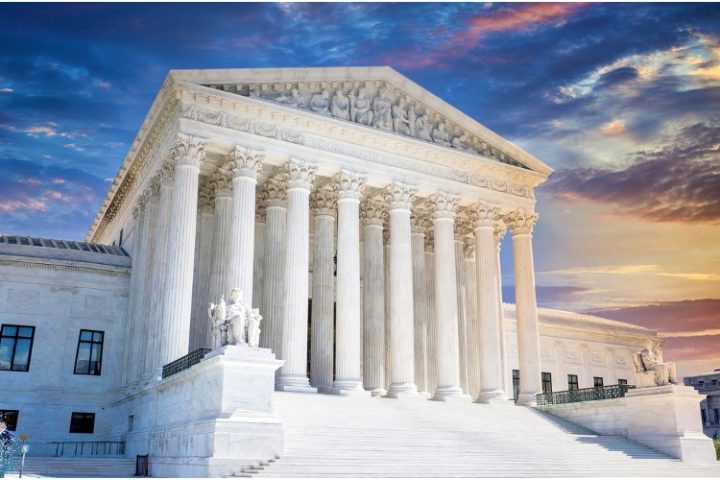
The U.S. Supreme Court was too late to stop the rise of unqualified candidates to the court itself. But at long last, it has ruled that affirmative action in college admissions is unconstitutional.
What that means as a practical matter is of course unknown. What it means as a constitutional matter is known: Colleges can no longer legally discriminate against whites and Asians to permit the matriculation of less-qualified blacks and Hispanics.
Citing the 14th Amendment to the federal Constitution with precedents going back to Brown v. Board of Education and Plessy v. Ferguson, Justice John Roberts, writing for the majority, wrote that “eliminating racial discrimination means eliminating all of it.”
Kids denied entry to college because of race now have a SCOTUS decision they can use to sue universities who continue discriminating.
Background Precedent
The case involved Students for Fair Admission, which sued Harvard University and the University of North Carolina on behalf of Asian-American applicants. The group argued that race-based admissions violate the Civil Right Act and 14th Amendment’s Equal Protection Clause.
“The conclusion reached by the Brown Court was thus unmistakably clear: the right to a public education ‘must be made available to all on equal terms,’” Roberts wrote in the 6-2 decision:
As the plaintiffs had argued, “no State has any authority under the equal-protection clause of the Fourteenth Amendment to use race as a factor in affording educational opportunities among its citizens.”
The Court cited other precedents that forbid racial discrimination and explained the “splintered” ruling in 1978’s University of California v. Bakke. That case involved a “set-aside admissions program” that discriminated against medical-school applicant Allan Bakke in favor of less-qualified minority candidates. The court ruled partly for Bakke and partly for the university, declaring that universities could use race-based admission policies, but that the policy used to exclude Bakke didn’t pass constitutional muster.
The court codified race-based admission in 2003’s Grutter v. Bollinger, the majority wrote, and “endorse[d] Justice [Liews] Powell’s view that student body diversity is a compelling state interest that can justify the use of race in university admissions.”
Though Grutter permitted race-based admissions, Roberts wrote, it included “the following caution”:
“It has been 25 years since Justice Powell first approved the use of race to further an interest in student body diversity in the context of public higher education.… We expect that 25 years from now, the use of racial preferences will no longer be necessary to further the interest approved today.”
Twenty years later, no end is in sight.
Yet “at some point, the [Grutter] Court held, [race-based admissions] must end.”
Today, they did.
No More Discrimination
In the case at hand, the two “admissions programs fail to articulate a meaningful connection between the means they employ and the goals they pursue,” Roberts averred.
As well, the “the point of [universities’] admissions programs is that there is an inherent benefit in race qua race — in race for race’s sake,” which the schools admit:
Harvard’s admissions process rests on the pernicious stereotype that “a black student can usually bring something that a white person cannot offer.”… UNC is much the same. It argues that race in itself “says [something] about who you are.”… We have time and again forcefully rejected the notion that government actors may intentionally allocate preference to those “who may have little in common with one another but the color of their skin.”… The entire point of the Equal Protection Clause is that treating someone differently because of their skin color is not like treating them differently because they are from a city or from a suburb, or because they play the violin poorly or well. “One of the principal reasons race is treated as a forbidden classification is that it demeans the dignity and worth of a person to be judged by ancestry instead of by his or her own merit and essential qualities.”
The anti-white, anti-Asian admission programs have no “logical end point,” Roberts wrote, and “there is no reason to believe that respondents will — even acting in good faith — comply with the Equal Protection Clause any time soon.”
Roberts also cited Associate Justice John Harlan’s words from Plessy v. Ferguson:
“In view of the Constitution, in the eye of the law, there is in this country no superior, dominant, ruling class of citizens. There is no caste here. Our Constitution is color-blind, and neither knows nor tolerates classes among citizens.”
Thus, “the Harvard and UNC admissions programs cannot be reconciled with the guarantees of the Equal Protection Clause,” Roberts wrote:
Both programs lack sufficiently focused and measurable objectives warranting the use of race, unavoidably employ race in a negative manner, involve racial stereotyping, and lack meaningful end points. We have never permitted admissions programs to work in that way, and we will not do so today.
The schools can consider unique challenges a minority applicant faced, “be it through discrimination, inspiration, or otherwise.” But that is all:
A benefit to a student who overcame racial discrimination, for example, must be tied to that student’s courage and determination. Or a benefit to a student whose heritage or culture motivated him or her to assume a leadership role or attain a particular goal must be tied to that student’s unique ability to contribute to the university. In other words, the student must be treated based on his or her experiences as an individual — not on the basis of race.
Many universities have for too long done just the opposite. And in doing so, they have concluded, wrongly, that the touchstone of an individual’s identity is not challenges bested, skills built, or lessons learned but the color of their skin. Our constitutional history does not tolerate that choice.
Unhappily, the practical effect of the ruling might be nil. Leftists still control most universities, and will undoubtedly work overtime figuring ways to continue discriminating against whites and Asians.
But, at least, again, those kids have a SCOTUS decision on which they rely if they sue.
“Now the real work begins,” wrote America First Legal founder Stephen Miller:
We expect many colleges and universities across America to either keep their current policies in place or do everything they can to work around this ruling so they continue discriminating based on race.
That is why we are officially asking all Americans victimized by racial discrimination from colleges and universities to contact America First Legal immediately.
This ruling means we can strike hard legally in our courts now and win major victories.
Now is the time to wage lawfare against the DEI colossus.



